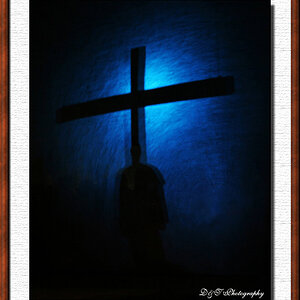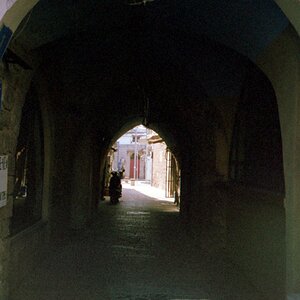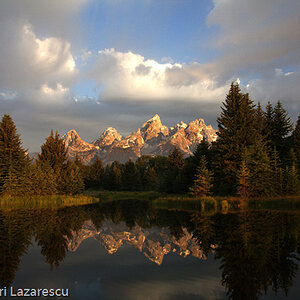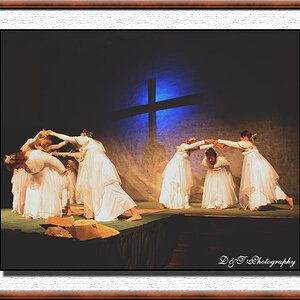Bluepoole
TPF Noob!
- Joined
- Dec 10, 2007
- Messages
- 31
- Reaction score
- 0
- Can others edit my Photos
- Photos NOT OK to edit
I have a problem with consistency between shots with flash - to illustrate the problem, I'm using two samples from my last wedding shoot.
Pic #1:

Pic #2:
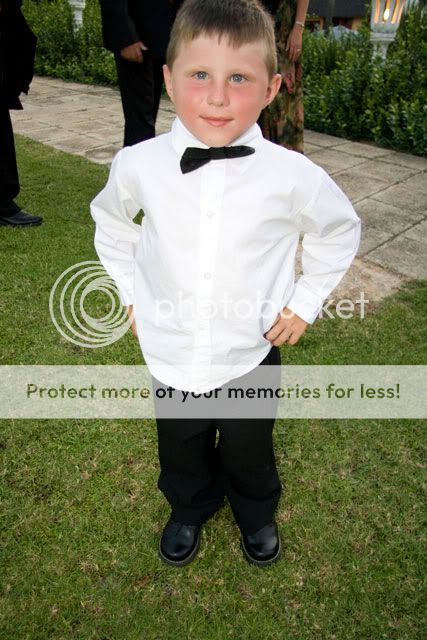
The photos were shot in RAW - for the purpose of this thread I did not perform any post processing on them, only resized and saved them in JPG.
As you can see, pic #2 looks way better than #1. The highlights are not blown out and the shadow of the boy is not so harsh.
More information: the two photos were taken seconds apart. Canon 1000D (XS), lens used was the EF-S 17-85mm, focal length was the same in both shots (22mm), flash used was the 430EX II, ETTL mode.
Program mode was used, in pic #1 the aperture was 4.5, in pic #2 it was 4.0 - the rest of the settings were exactly the same - shutter speed of 1/60, ISO 400, Centre weighted average metering mode, no FEC.
I know the framing is slightly different, but in my opinion not really so much to affect the exposure. I don't believe it was the camera's metering that caused the inconsistency, since the shutter speed and aperture combination is almost identical.
So why the inconsistency? Only aspect I can still think of is the flash output (strength). But why would it differ so much? I've read that the Speedlite also performs a metering function. If so, how can one control it more efficiently? When looking at the shooting data of photos in Zoombrowser, it is not possible to see the value of the flash output (as opposed to being able to see the flash exposure compensation) - isn't there a way to see this?
Would one necessarily get more consistent results by rather using the Speedlite in manual mode and adjusting the flash output yourself? During a wedding the pace does not really allow you to change flash output all the time.
I also get stronger flash output and more blown out highlights when my focal length is less than 35mm.
Any ideas/input or comments would be appreciated!
Pic #1:

Pic #2:

The photos were shot in RAW - for the purpose of this thread I did not perform any post processing on them, only resized and saved them in JPG.
As you can see, pic #2 looks way better than #1. The highlights are not blown out and the shadow of the boy is not so harsh.
More information: the two photos were taken seconds apart. Canon 1000D (XS), lens used was the EF-S 17-85mm, focal length was the same in both shots (22mm), flash used was the 430EX II, ETTL mode.
Program mode was used, in pic #1 the aperture was 4.5, in pic #2 it was 4.0 - the rest of the settings were exactly the same - shutter speed of 1/60, ISO 400, Centre weighted average metering mode, no FEC.
I know the framing is slightly different, but in my opinion not really so much to affect the exposure. I don't believe it was the camera's metering that caused the inconsistency, since the shutter speed and aperture combination is almost identical.
So why the inconsistency? Only aspect I can still think of is the flash output (strength). But why would it differ so much? I've read that the Speedlite also performs a metering function. If so, how can one control it more efficiently? When looking at the shooting data of photos in Zoombrowser, it is not possible to see the value of the flash output (as opposed to being able to see the flash exposure compensation) - isn't there a way to see this?
Would one necessarily get more consistent results by rather using the Speedlite in manual mode and adjusting the flash output yourself? During a wedding the pace does not really allow you to change flash output all the time.
I also get stronger flash output and more blown out highlights when my focal length is less than 35mm.
Any ideas/input or comments would be appreciated!
Last edited:


![[No title]](/data/xfmg/thumbnail/39/39225-99d579cd498f8f152a288d7e8e7ad2a4.jpg?1619738926)




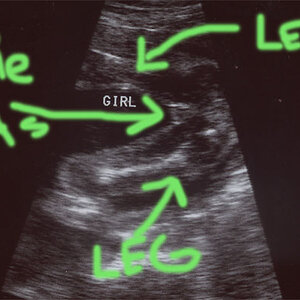
![[No title]](/data/xfmg/thumbnail/39/39224-aa3271aa220fe57f37caf898b6984846.jpg?1619738926)

